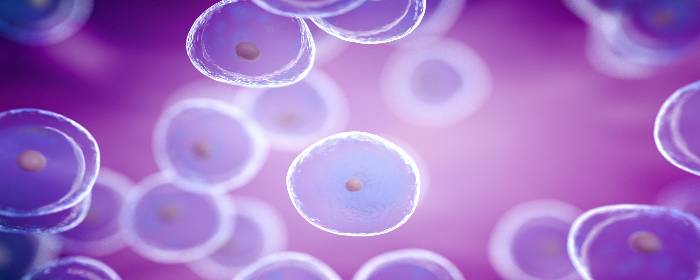
by admin | Dec 30, 2019 | Stem Cell Therapy, Adipose, Age Management, Mesenchymal Stem Cells, Stem Cell Research
Autologous stem cell treatments offer several advantages over other forms of stem cell treatment. In autologous stem cell treatment, a patient’s own stem cells are retrieved, processed, and injected back into the patient’s body. There is no need for a stem cell donor, and the entire procedure can take place in the same medical office. Since the patient’s own cells are used for an autologous stem cell treatment, there is no risk of disease transmission from a donor (because there is no donor) and no risk of rejection (because they are the patient’s own stem cells). Autologous stem cell treatments has some major benefits for the elderly.
Unfortunately, younger stem cells are better for
regenerative medicine than older stem cells are. Moreover, older people have
fewer stem cells that can be harvested than they did when they were younger. So
while autologous stem cell treatment is still advantageous, it becomes more difficult
to achieve as patients get older because their stem cells are fewer and less potent.
Making matters worse, older stem cells compete against more youthful stem
cells, making autologous stem cell treatments potentially even less effective
in older patients.
Fortunately, stem cell researchers are coming up with ways to make the most out of the stem cells that older patients still have. They still take a sample of tissue, such as fat, and harvest the stem cells contained within it. However, instead of injecting all stem cells from the sample (both older and youthful stem cells), researchers select and use only youthful stem cells. Furthermore, they make the treatments even more effective by injecting other substances (e.g. extracellular matrix) that help youthful stem cells survive, grow, and thrive.
To demonstrate the effectiveness of their approach,
researchers collected mesenchymal
stem cells from about a dozen older individuals aged 65 to 86 years old.
They then assorted the stem cells into different groups, separating youthful
from older stem cells. They then used special factors to help the youthful stem
cells grow, increasing the numbers by an impressive 17,000 times. So while only
8% of stem cells produced by older individuals are “youthful,” this laboratory
process increased those numbers to a point that they can be used for stem cell
treatments—even stored for future use!
The next phase of the research will be to inject these youthful stem cells into older patients and assess their effectiveness. However, even these preliminary results are exciting because they suggest that people of all ages can potentially benefit from autologous stem cell treatments, not just middle age and younger individuals.
Reference: Block, TJ et al. (2017). Restoring the quantity and quality of elderly human mesenchymal stem cells for autologous cell-based therapies. Stem Cell Research & Therapy. 2017 Oct 27;8(1):239.

by admin | Dec 27, 2019 | Health Awareness, Aesthetics, Age Management, Skin Care
Maintaining healthy, luminous skin isn’t impossible, but it does require some self-care. Fortunately, many of these steps are quick, simple, and can be introduced easily into your daily routine. And, because many of the strategies to boost skin wellness also go hand-in-hand with overall healthy habits, you may even see some other benefits as a result. Here are some of the most powerful ways to improve your skin’s health naturally. Here are 7 beauty tips for naturally vibrant skin.
Always Remove Your Makeup
Your skin needs to breathe while you’re resting, but makeup
can clog your pores and prevent it from getting the air it needs. To keep
imperfections like blackheads and blemishes at bay always remove your makeup
every night before bed – no exception. If you don’t have time to wash your face
entirely, at least use a cotton pad and olive oil to gently remove lingering
cosmetics.
Get Plenty of Wholesome Nutrients
Every system in your body requires proper nutrition to
function its best, and your skin is no different. Foods
rich in healthy fats, including fatty fish, avocadoes, and nuts, are
especially powerful for keeping skin hydrated and supple. Nutrient-rich foods
like vegetables, fruit, and lean protein will also help round out a
skin-healthy diet.
Exercise Regularly
Exercise
increases blood flow, which helps to boost skin health. When you get
active, circulation increases, which carries essential nutrients to the skin.
Plus, increased blood flow also helps to carry away waste such as free
radicals, which could otherwise exacerbate the signs of aging.
Stay Hydrated
Every single cell in your body requires water
– especially your skin cells. Your skin is an organ made up of water, and
without enough hydration, it can begin to look flaky, dull, and aged. Be sure
to get at least glasses a day to keep your skin looking its best.
Sleep Soundly
The signs of a poor night’s sleep are likely to show up on
your skin immediately, in the form of puffy eyes or undereye bags. Yet, a
pattern of bad sleep can also take its toll on your skin. Because cells
regenerate during sleep, getting ample rest is essential to fighting the signs
of aging. Aim for at least eight hours of shut-eye each night to promote a
natural glow.
Keep Your Skin Moisturized
Dry skin loses its elasticity and makes it easier to spot
fine lines and wrinkles. For this reason, you should be applying a gentle
moisturizer every morning and evening. Look for one with natural,
non-irritating ingredients, especially if you have sensitive skin.
Never Skip Sunblock
The final but most important rule for maintaining healthy skin is to apply sunblock each and every day. Even if you’re only outdoors briefly, UV damage can add up, and will eventually lead to wrinkles, sun spots, and other signs of aging. Make sure your moisturizer has an SPF of 30 or higher, and that it can block out both harmful UVA and UVB rays to keep your skin not only safe, but healthy-looking.

by admin | Oct 23, 2019 | Age Management, Stem Cell Research, Stem Cell Therapy
Autologous stem cell treatments offer several advantages over other forms of stem cell treatment. In autologous stem cell treatment, a patient’s own stem cells are retrieved, processed, and injected back into the patient’s body. There is no need for a stem cell donor, and the entire procedure can take place in the same medical office. Since the patient’s own cells are used for an autologous stem cell treatment, there is no risk of disease transmission from a donor (because there is no donor) and no risk of rejection (because they are the patient’s own stem cells).
Unfortunately, younger stem cells are better for regenerative medicine than older stem cells are. Moreover, older people have fewer stem cells that can be harvested than they did when they were younger. So while autologous stem cell treatment is still advantageous, it becomes more difficult to achieve as patients get older because their stem cells are fewer and less potent. Making matters worse, older stem cells compete against more youthful stem cells, making autologous stem cell treatments potentially even less effective in older patients.
Fortunately, stem cell researchers are coming up with ways to make the most out of the stem cells that older patients still have. They still take a sample of tissue, such as fat, and harvest the stem cells contained within it. However, instead of injecting all stem cells from the sample (both older and youthful stem cells), researchers select and use only youthful stem cells. Furthermore, they make the treatments even more effective by injecting other substances (e.g. extracellular matrix) that helps youthful stem cells survive, grow, and thrive.
To demonstrate the effectiveness of their approach, researchers collected mesenchymal stem cells from about a dozen older individuals aged 65 to 86 years old. They then assorted the stem cells into different groups, separating youthful from older stem cells. They then used special factors to help the youthful stem cells grow, increasing the numbers by an impressive 17,000 times. So while only 8% of stem cells produced by older individuals are “youthful,” this laboratory process increased those numbers to a point that they can be used for stem cell treatments—even stored for future use!
The next phase of the research will be to inject these youthful stem cells into older patients and assess their effectiveness. However, even these preliminary results are exciting, because they suggest that people of all ages can potentially benefit from autologous stem cell treatments, not just middle age and younger individuals.
Reference: Block, TJ et al. (2017). Restoring the quantity and quality of elderly human mesenchymal stem cells for autologous cell-based therapies. Stem Cell Research and Therapy. 2017 Oct 27;8(1):239.

by admin | Oct 9, 2019 | Stem Cell Research, Age Management, Stem Cell Therapy
Frailty is a syndrome of weight-loss, exhaustion, weakness, slowness, and decreased physical activity. These features combine to make frail individuals more susceptible to physical, psychosocial, and cognitive impairments. Unfortunately, frailty is rather common among elderly individuals. In one study of over 44,000 elderly adults living in the community estimated the overall prevalence of frailty was 10.7%. While the risk of becoming frail increases with old age, frailty is not a normal part of aging. Instead, the syndrome of frailty is driven by biological processes such as inflammation and stem cell dysfunction.
No specific treatment can prevent or reverse frailty. Indeed, the goal of treatment is to maximize the patient’s functional capacity and overall health. The most widely accepted way to manage frailty is a multimodal and multidisciplinary approach. Frail individuals or those at risk for becoming frail are encouraged to participate in strength training and aerobic exercise to build up a cardiovascular reserve and physical fitness. At the same time, substantial efforts are devoted to helping patients consume enough calories to maintain lean muscle and support their immune function. As appetite diminishes, malnutrition can become an issue, so supplemental nutrition may be needed. Physicians can help patients by optimizing medical treatments and reducing the total number of medications prescribed (i.e. avoiding polypharmacy).
Despite these multimodal treatments, most frail patients tend to get worse over time. One hope of treatment is to slow the rate of decline; however, this is not always possible.
Since frailty is driven by stem cell dysfunction, a reasonable way to prevent or treat frailty could be to provide patients with healthy stem cells. Researchers recently conducted a randomized, double-blind, clinical trial in 30 elderly patients with frailty. Frail patients received an IV infusion of either human mesenchymal stem cells or placebo. The researchers then followed the patients for 6 months to assess the safety and efficacy of the stem cell treatment.
Stem cell treatment resulted in a rather remarkable set of benefits for frail patients. Compared to placebo, patients treated with stem cells performed significantly better on tests of physical strength and stamina. Stem cell-treated patients used calories more efficiently, which is a sign that they were more physically fit than those in the placebo group. Moreover, patients who received stem cells had better lung function at the end of the trial than those in the control group. Interestingly, women who received stem cell treatment reported a substantial increase in sexual quality of life compared to those in the placebo group. Lastly, no patients experienced any treatment-related serious adverse events.
When one considers how difficult it is to treat frailty or even alter its progressive decline, these results are remarkable. Stem cell treatment not only stopped the progression of frailty, but patients actually improved in several important measures including physical strength, physical endurance, lung function, and sexual quality of life. We anxiously await a pivotal clinical trial to confirm these results.
Reference: Tompkins, BA. (2017). Allogeneic Mesenchymal Stem Cells Ameliorate Aging Frailty: A Phase II Randomized, Double-Blind, Placebo-Controlled Clinical Trial. The Journals of Gerontology, Series A, Biological Sciences and Medical Sciences. 2017 Oct 12;72(11):1513-1522.

by admin | Aug 29, 2019 | Age Management, Mesenchymal Stem Cells, Stem Cell Therapy
Cognitive aging describes the changes to our ability to think, remember, and process information that occurs as we age. Cognitive aging begins in adulthood and progresses—if not accelerates—in old age. Over time, the speed at which we process information in the brain slows down, our ability to pay and maintain attention decreases, and we have a harder time making and recalling new memories. While some view cognitive aging as normal because it occurs in all of us, others acknowledge that cognitive aging is something that interferes with a person’s ability to function and diminishes the quality of life.
Currently, there are very few things that can slow cognitive aging and essentially nothing that can reverse it. Physical exercise, mental activity, and a healthful diet can modestly preserve cognitive function as we age. However, once aging occurs in the brain, there is nothing that we can do—currently—to change it.
Some innovative scientists are trying to change that, however. They are focusing on the changes in the brain that take place during aging and using stem cells to reverse that process.
A group of neuroscientists focused their efforts on memory and on the hippocampus, which is the main region of the brain that is responsible for memory. Researchers collected clinical-grade, mesenchymal stem cells taken from human umbilical cords and infused them into aging mice. Aging mice received stem cell treatment once every two weeks for several months.
After three months of treatment with umbilical cord-derived mesenchymal stem cells, mice showed significant improvement in learning and memory tests. Treated mice also had a remarkably improved function in the hippocampus. Surprisingly, stem cell treatment also created new brain cells (i.e. neurogenesis). Indeed, stem cell transplantation in aging mice actually reversed changes in the brain associated with cognitive aging.
These results were conducted in mice and not in humans, however, this research offers a strong foundation for conducting clinical human studies. If these improvements in memory and brain health could be shown in humans, it would be a groundbreaking study. Even in its current form, this research is an exciting breakthrough for the fields of stem cell medicine, neuroscience, and the neurobiology of cognitive aging. It suggests that mesenchymal stem cells may one day be able to reverse cognitive aging.
Reference: Cao N. et al. (2017). Clinical-grade human umbilical cord-derived mesenchymal stem cells reverse cognitive aging via improving synaptic plasticity and endogenous neurogenesis. 2017 Aug 10;8(8):e2996.

by admin | Jul 25, 2019 | Age Management, Mesenchymal Stem Cells, Stem Cell Research
Aging skin goes through a number of predictable changes. Skin loses collagen and other proteins as it ages, making the skin appear dull, saggy, discolored, and wrinkly. Many of these changes are due to the sun, as it bombards the skin with harmful ultraviolet (UV) radiation. When the skin is exposed to the sun’s UV radiation, it produces reactive oxygen species and leads to oxidative stress. The result is of these oxygen radicals is thickened, damaged, photo-aged skin. Unfortunately, the cells that could help replenish and rejuvenate the skin—epidermal progenitor cells—may also be damaged by UV radiation. Indeed, as we age, we produce fewer and fewer of these helpful cells. Thus, the skin is left defenseless.
Researchers are looking for ways to fight back against the ravaging effects of age and sun damage on human skin. Some have reasoned that if the skin lacks epidermal progenitor cells during aging, why not try to protect or restore those cells? Consequently, some scientists have studied the effects of injecting stem cells directly into the skin (with promising results). However, many patients would like to have the same skin rejuvenation effect without painful injections. Scientists are learning that the beneficial effects of stem cells come mostly from the things that they secrete rather than the stem cells themselves. This means that doctors could potentially take the fluid that a stem cell secretes and use that liquid as a treatment, rather than injecting whole stem cells into a patient’s skin. Indeed, this is the approach that researchers recently pursued and published.
Researchers began their research by collecting epidermal progenitor cells taken from mesenchymal stem cells. These epidermal progenitor cells are the stem cells that give rise to skin. Epidermal progenitor cells also produce substances that help support natural, youthful skin growth and development. The researchers allowed these epidermal progenitor cells to produce and release substances into the surrounding solution. They then collected that solution and used it in subsequent experiments.
In the first set of experiments, researchers showed that the cell-free fluid derived from stem cells could protect skin cells from oxidative stress caused by hydrogen peroxide. Indeed, something (or things) released by the stem cells prevented skin cells from undergoing the types of changes they would endure during sun damage. In fact, the treatment apparently caused the skin to increase its own natural defenses by producing more antioxidant enzymes and increasing the creation of new collagen.
Encouraged by these results, the researchers then conducted a clinical study of 25 people between the ages of 29 and 69. They took the same cell-free fluid derived from stem cells and applied it topically to the skin of volunteers twice a day for four weeks. The treatment significantly reduced skin depressions and wrinkles. Treatment also noticeably improved the texture of the skin.
Given the apparent safety and efficacy of this cell-free treatment, researchers are likely to continue to test these treatments in larger clinical trials. The results are exciting because they offer the possibility of a topical stem cell treatment without directly injecting stem cells themselves. Indeed, patients may someday be able to use cell-free stem cell skin rejuvenation treatments at home.
Reference: Sohn, SJ. et al. (2018). Anti-aging Properties of Conditioned Media of Epidermal Progenitor Cells Derived from Mesenchymal Stem Cells. Dermatology and Therapy. 2018 Jun;8(2):229-244.







 St. Petersburg, Florida
St. Petersburg, Florida
